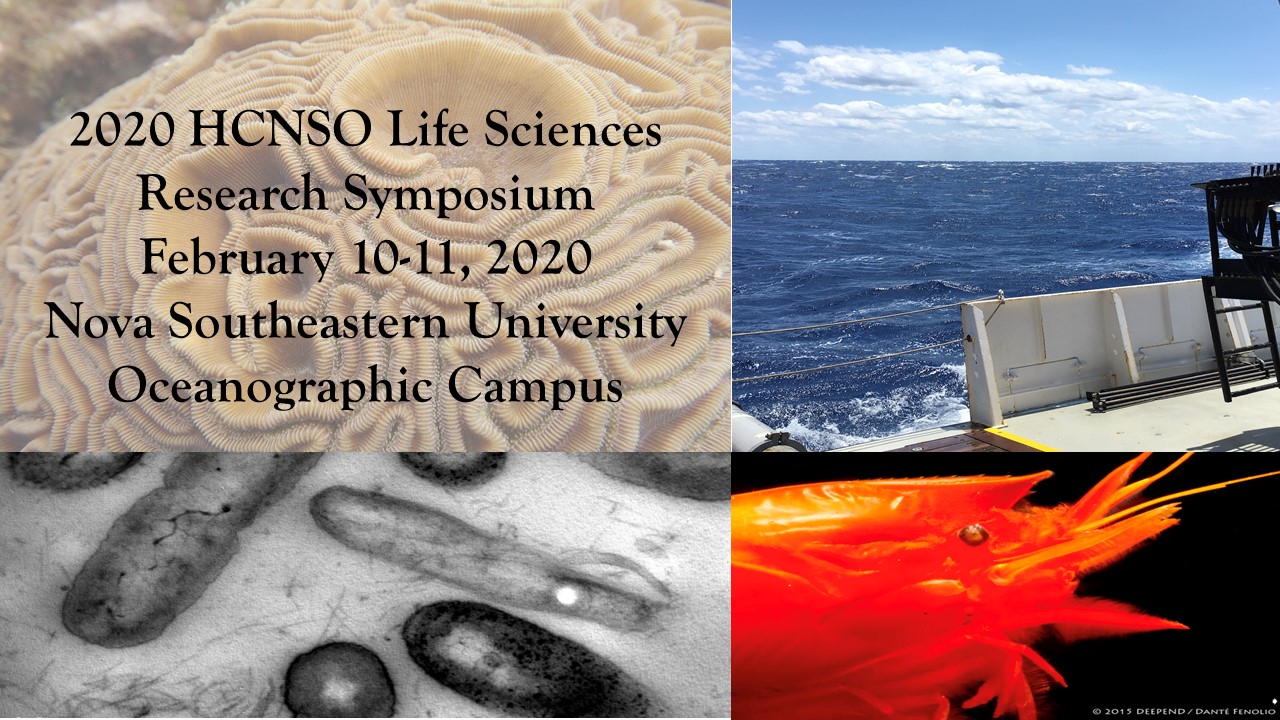Coral Community Dynamics in Southeast Florida
Location
HCNSO Guy Harvey Oceanographic Center Nova Southeastern University
Start
2-10-2020 4:00 PM
End
2-10-2020 4:15 PM
Type of Presentation
Oral Presentation
Abstract
The persistence of coral reefs is threatened worldwide. Regional declines in stony coral cover and changes to community composition have followed multiple local and global disturbance events in recent decades. To assess the future of coral reefs, it is critical to understand the spatial and temporal patterns in coral community structure and population dynamics which determine recovery potential. This study looked at the community dynamics and population structure of stony corals on the Southeast Florida Reef Tract (SEFRT) over 20 years. The SEFRT is a high-latitude reef system offshore of a highly urbanized coastline. High-latitude coral communities have been postulated as the first areas to undergo reorganization under climate change, including the tropicalization of reefs currently found towards the thermal tolerance limits of corals with increasing water temperature. However, local anthropogenic stress may negate this potential. From 2000 to 2019, stony coral demographic surveys were conducted annually at 22 sites throughout Broward County, Florida. Stony corals were identified to species, measured and assessed for mortality along a single, permanent 20m by 1.5m transect at each site. Multivariate and univariate analyses were conducted to assess the spatial distribution of species, spatiotemporal variation in coral community composition and changes in population structure. An increase in small colonies of the weedy species’, Porites astreoides and Agaricia agaricites were found at specific sites, while declines in larger reef-building colonies, including Montastraea cavernosa and Meandrina meandrites, were more widespread. Changes to community structure are predicted to inhibit recovery potential and while the small average colony size of multiple species indicates recruitment, many ecosystem functions are likely limited.
Coral Community Dynamics in Southeast Florida
HCNSO Guy Harvey Oceanographic Center Nova Southeastern University
The persistence of coral reefs is threatened worldwide. Regional declines in stony coral cover and changes to community composition have followed multiple local and global disturbance events in recent decades. To assess the future of coral reefs, it is critical to understand the spatial and temporal patterns in coral community structure and population dynamics which determine recovery potential. This study looked at the community dynamics and population structure of stony corals on the Southeast Florida Reef Tract (SEFRT) over 20 years. The SEFRT is a high-latitude reef system offshore of a highly urbanized coastline. High-latitude coral communities have been postulated as the first areas to undergo reorganization under climate change, including the tropicalization of reefs currently found towards the thermal tolerance limits of corals with increasing water temperature. However, local anthropogenic stress may negate this potential. From 2000 to 2019, stony coral demographic surveys were conducted annually at 22 sites throughout Broward County, Florida. Stony corals were identified to species, measured and assessed for mortality along a single, permanent 20m by 1.5m transect at each site. Multivariate and univariate analyses were conducted to assess the spatial distribution of species, spatiotemporal variation in coral community composition and changes in population structure. An increase in small colonies of the weedy species’, Porites astreoides and Agaricia agaricites were found at specific sites, while declines in larger reef-building colonies, including Montastraea cavernosa and Meandrina meandrites, were more widespread. Changes to community structure are predicted to inhibit recovery potential and while the small average colony size of multiple species indicates recruitment, many ecosystem functions are likely limited.


